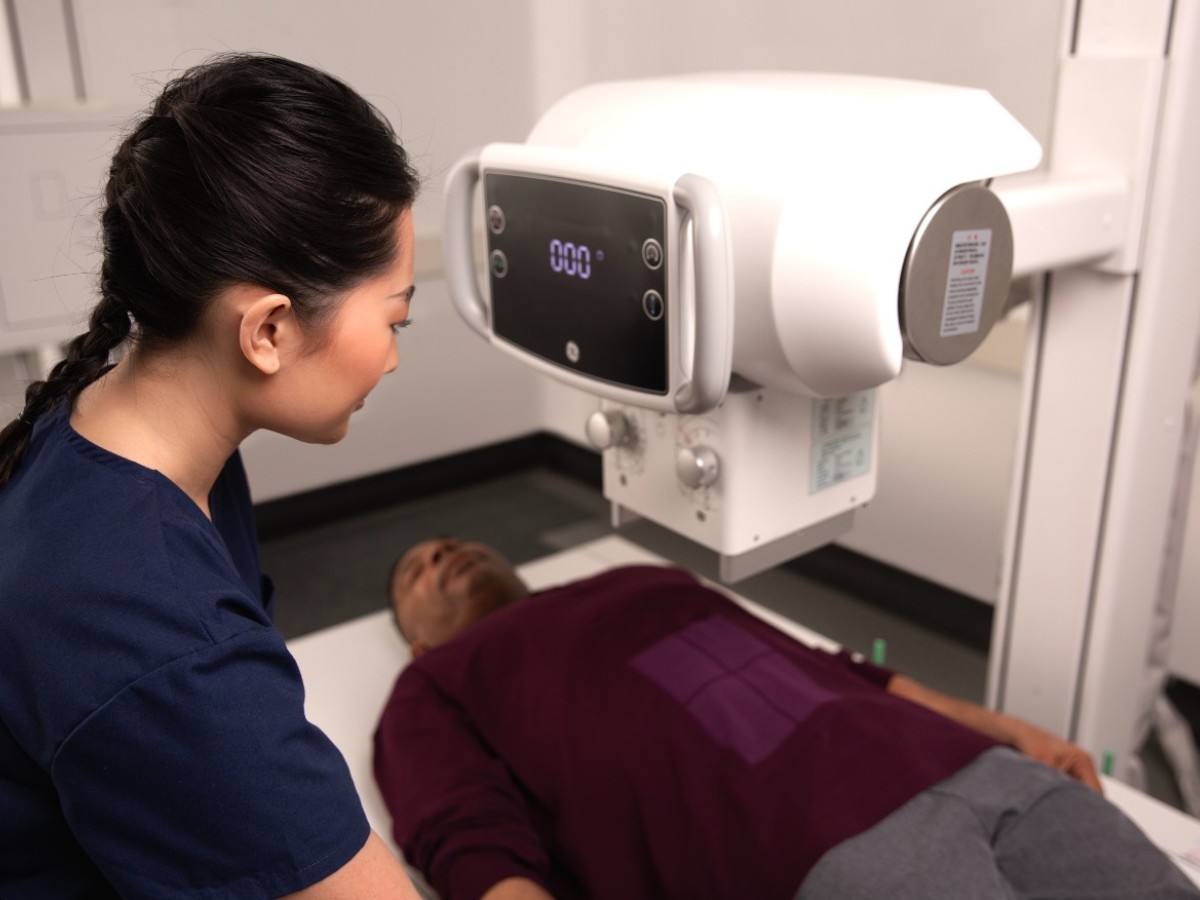The world’s population is witnessing a significant increase in life expectancy, accompanied by a rise in health concerns.[1] Medical imaging has become an indispensable tool to address these issues, with X-ray at the forefront. X-ray often serves as the initial step in the diagnostic process, accounting for approximately 60 percent of all diagnostic imaging studies.[2] However, ensuring access to high-quality imaging services such as X-ray technology remains a challenge, particularly in rural and community settings.[3] To meet the surging demand for imaging services and provide better accessibility to patients, providers are installing X-ray systems to accommodate the ever-increasing medical needs, especially where access to advanced healthcare resources may be limited.
Escalating healthcare demands and the need for X-ray systems
With the global population’s trajectory to live longer, enhanced healthcare services will be necessary to address the diverse health concerns that accompany aging. From detecting fractures and identifying pneumonia to guiding surgical interventions and assessing the progression of chronic conditions, X-ray technology plays a crucial role in diagnosing and managing a wide range of medical conditions. However, the increasing demand for imaging services such as X-ray poses a challenge for healthcare providers to ensure equitable access to these critical imaging tools. According to the World Health Organization, the use of X-ray and other medical imaging techniques can resolve between 70 and 80 percent of diagnostic problems, but nearly two-thirds of the world's population has no access to diagnostic imaging.[4]
Because it is often the first step in the diagnostic process, X-ray remains the workhorse modality in radiology and is likely to hold its position in the years ahead. In many countries, the need for X-ray imaging has grown exponentially, with hospitals, outpatient centers, urgent care facilities, and imaging centers experiencing an upsurge in patient volume.[5] While urban areas often benefit from advanced medical infrastructure, community, and rural settings face limited access to essential healthcare services, including medical imaging. Addressing this disparity calls for innovative solutions that can extend the reach of high-quality, digital X-ray technology to all corners of society.
Market trend reports also suggest that X-ray will continue to be a prominent tool in radiology in the coming years. According to research trend data, the global X-ray market is projected to experience a compound annual growth rate of 5.14 percent, reaching $14.580 billion by 2025 from $10.793 billion in 2019.[6]
Expanding digital X-ray’s reach beyond traditional settings
Traditionally, X-ray systems have been confined within the walls of large hospitals and dedicated imaging facilities. However, the evolving landscape of healthcare delivery has led to a significant shift in the deployment of medical imaging technology, such as X-ray systems.[7] Today, X-ray systems can be found in various settings, including hospitals, hospital outpatient centers, urgent care facilities, free-standing imaging centers, and even retail outlet urgent care locations. This decentralization of X-ray technology has the potential to improve accessibility and bring high-quality medical imaging technology closer to the communities that need it most.
Recognizing the need to improve access to X-ray imaging, GE HealthCare has taken a proactive approach by developing a game-changing digital X-ray system. This state-of-the-art technology is designed to help overcome the barriers that have traditionally hindered the widespread adoption of these systems in smaller settings. As a floor mount system with a relatively small footprint, it can be easily installed in many different settings, including retail urgent care locations. The system’s user interface and operation have been designed for use by X-ray technologists with any level of experience, offering easy patient positioning and thoughtfully designed workflows that can improve efficiencies and reduce the occurrence of errors in image acquisition.
Innovating digital X-ray to improve access to state-of-the-art imaging
Innovative digital X-ray systems with several key features can help remove the barriers to entry that many healthcare providers face, and often limits access to high-quality imaging services. The use of artificial intelligence (AI) on the digital X-ray system can optimize image presentation for review.[8] The system’s ability to generate digital X-ray images is a critical factor in improving access to care, as the images can be reviewed remotely and can allow radiologists and clinicians to collaborate regardless of geographical distances. This capability can be particularly valuable in underserved areas where access to radiologists might be limited.
By producing accurate and reliable images, GE HealthCare’s digital X-ray system can empower even the most remote healthcare facilities with access to the latest digital diagnostic X-ray capabilities. In addition to these diagnostic and usability strengths, the system is affordable, removing financial barriers to entry and making it suitable for a wide range of healthcare providers, from large medical centers to smaller facilities.
“Our Definium™ Pace X-ray system is a game-changer in the world of medical imaging,” said Tanya Lancaster, General Manager of Fixed Radiography at GE HealthCare. “We believe this digital X-ray technology will empower healthcare providers to extend their reach into underserved communities, bringing high-quality X-ray imaging closer to patients in need. By fostering collaboration through remote image review and utilizing AI-based quality checks, we are confident that the Definium Pace will revolutionize healthcare delivery, making it more accessible for all patients.”
Promoting improved access to care
As the world continues to face the challenges posed by an aging population and increasing healthcare demands, clinicians and industry partners remain steadfast in their mission to drive change and increase access to care. GE HealthCare’s commitment to improving access to high-quality X-ray technology is impacting the global landscape of X-ray imaging. The introduction of an affordable, easy-to-use, and flexible digital imaging solution drives innovation and empowers healthcare providers to establish diagnostic services in underserved areas so that more patients can receive timely and accurate diagnoses.
RELATED CONTENT
Learn more about GE HealthCare's X-ray solutions, here.
DISCLAIMER
Not all products or features are available in all geographies. Check with your local GE HealthCare representative for availability in your country.
REFERENCES
[1] Lunenfeld B, Stratton P. The clinical consequences of an ageing world and preventive strategies. Best Pract Res Clin Obstet Gynaecol. 2013 Oct;27(5):643-59. doi: 10.1016/j.bpobgyn.2013.02.005. Epub 2013 Mar 28. PMID: 23541823; PMCID: PMC3776003.
[2] IMV 2019 X-ray CR / DR Market Outlook Report) page 9, 37
[3] https://www.rsna.org/news/2021/june/rural-radiology-equity
[4] https://www3.paho.org/hq/index.php?option=com_content&view=article&id=7410:2012-dia-radiografia-dos-tercios-poblacion-mundial-no-tiene-acceso-diagnostico-imagen&Itemid=0&lang=en#gsc.tab=0
[5] https://onlinedegree.uncw.edu/articles/nursing/implications-of-the-outpatient-shift.aspx
[6] https://www.itnonline.com/content/global-X-ray-device-market-expected-grow-4580-billion-2025
[7] https://onlinedegree.uncw.edu/articles/nursing/implications-of-the-outpatient-shift.aspx
[8] AI-embedded X-ray system could help speed up detection of a collapsed lung. GE Healthcare. http://newsroom.gehealthcare.com/ai-embedded-X-ray-system-could-help-speed-up-detection-of-a-collapsed-lung/. Accessed Dec. 11, 2018.


